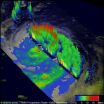(Press-News.org) HOUSTON – (Sept. 18, 2012) – Contrary to the prevailing theories that music and language are cognitively separate or that music is a byproduct of language, theorists at Rice University's Shepherd School of Music and the University of Maryland, College Park (UMCP) advocate that music underlies the ability to acquire language.
"Spoken language is a special type of music," said Anthony Brandt, co-author of a theory paper published online this month in the journal Frontiers in Cognitive Auditory Neuroscience. "Language is typically viewed as fundamental to human intelligence, and music is often treated as being dependent on or derived from language. But from a developmental perspective, we argue that music comes first and language arises from music."
Brandt, associate professor of composition and theory at the Shepherd School, co-authored the paper with Shepherd School graduate student Molly Gebrian and L. Robert Slevc, UMCP assistant professor of psychology and director of the Language and Music Cognition Lab.
"Infants listen first to sounds of language and only later to its meaning," Brandt said. He noted that newborns' extensive abilities in different aspects of speech perception depend on the discrimination of the sounds of language – "the most musical aspects of speech."
The paper cites various studies that show what the newborn brain is capable of, such as the ability to distinguish the phonemes, or basic distinctive units of speech sound, and such attributes as pitch, rhythm and timbre.
The authors define music as "creative play with sound." They said the term "music" implies an attention to the acoustic features of sound irrespective of any referential function. As adults, people focus primarily on the meaning of speech. But babies begin by hearing language as "an intentional and often repetitive vocal performance," Brandt said. "They listen to it not only for its emotional content but also for its rhythmic and phonemic patterns and consistencies. The meaning of words comes later."
Brandt and his co-authors challenge the prevailing view that music cognition matures more slowly than language cognition and is more difficult. "We show that music and language develop along similar time lines," he said.
Infants initially don't distinguish well between their native language and all the languages of the world, Brandt said. Throughout the first year of life, they gradually hone in on their native language. Similarly, infants initially don't distinguish well between their native musical traditions and those of other cultures; they start to hone in on their own musical culture at the same time that they hone in on their native language, he said.
The paper explores many connections between listening to speech and music. For example, recognizing the sound of different consonants requires rapid processing in the temporal lobe of the brain. Similarly, recognizing the timbre of different instruments requires temporal processing at the same speed -- a feature of musical hearing that has often been overlooked, Brandt said.
"You can't distinguish between a piano and a trumpet if you can't process what you're hearing at the same speed that you listen for the difference between 'ba' and 'da,'" he said. "In this and many other ways, listening to music and speech overlap." The authors argue that from a musical perspective, speech is a concert of phonemes and syllables.
"While music and language may be cognitively and neurally distinct in adults, we suggest that language is simply a subset of music from a child's view," Brandt said. "We conclude that music merits a central place in our understanding of human development."
Brandt said more research on this topic might lead to a better understanding of why music therapy is helpful for people with reading and speech disorders. People with dyslexia often have problems with the performance of musical rhythm. "A lot of people with language deficits also have musical deficits," Brandt said.
More research could also shed light on rehabilitation for people who have suffered a stroke. "Music helps them reacquire language, because that may be how they acquired language in the first place," Brandt said.
INFORMATION:
The research was supported by Rice's Office of the Vice Provost for Interdisciplinary Initiatives, the Ken Kennedy Institute for Information Technology and the Shepherd School of Music.
For the full text of the theory paper, visit http://www.frontiersin.org/Auditory_Cognitive_Neuroscience/10.3389/fpsyg.2012.00327/abstract.
END
Although depression and prejudice traditionally fall into different areas of study and treatment, a new article suggests that many cases of depression may be caused by prejudice from the self or from another person. In an article published in the September 2012 issue of Perspectives on Psychological Science, a journal of the Association for Psychological Science, William Cox of the University of Wisconsin-Madison and colleagues argue that prejudice and depression are fundamentally connected.
Consider the following sentence: "I really hate _____. I hate the way _____ look. ...
While wave watching is a favorite pastime of beachgoers, few notice what is happening in the shallowest water. A closer look by two University of Colorado Boulder applied mathematicians has led to the discovery of interacting X- and Y-shaped ocean waves that may help explain why some tsunamis are able to wreak so much havoc.
Professor Mark Ablowitz and doctoral student Douglas Baldwin repeatedly observed such wave interactions in ankle-deep water at both Nuevo Vallarta, Mexico, and Venice Beach, Calif., in the Pacific Ocean -- interactions that were thought to be very ...
ANN ARBOR, Mich. — A small subset of patients with open-angle glaucoma (OAG) account for a large proportion of all glaucoma-related charges in the United States, according to new data published by researchers at the University of Michigan Kellogg Eye Center and Washington University, St. Louis.
These findings have importance for future evaluations of the cost-effectiveness of screening and treatment for glaucoma.
"We've identified risk factors associated with patients who are the costliest recipients of glaucoma-related eye care," says Joshua D. Stein, M.D., M.S., ...
Powerful thunderstorms wrapped tightly around Hurricane Lane's center as it continued moving through the eastern Pacific Ocean. When NASA's Terra satellite passed over Lane it captured a close-up view of the storm and noticed that Lane's eye had become cloud-filled as if being punched in the eye. Nature is expected to fight Lane more and win over the next couple of days.
The Moderate Resolution Imaging Spectroradiometer (MODIS) instrument captured a close-up of Lane on Sept. 17 at 3:25 p.m. EDT when it was still a hurricane. In the image, Lane's eye appeared obscured ...
Heavy rainfall from Typhoon Sanba caused flooding, landslides and at least one death when it hit South Korea on Monday September 17, 2012. NASA's TRMM satellite captured rainfall and thunderstorm cloud height data as Sanba drenched southwestern Japan earlier, and its eye passed to the west of the Japanese island of Kyushu.
The Tropical Rainfall Measuring Mission (TRMM) satellite provided good coverage of Sanba as it passed over Typhoon Sanba on Sept. 16, 2012 at 0349 UTC, after Sanba had passed over Okinawa, Japan. Sanba was moving northward over the East China Sea toward ...
BETHESDA, Md. (Sept. 18, 2012)—Diabetic nephropathy is one of the most serious complications related to diabetes, often leading to end-stage kidney disease. Purple corn grown in Peru and Chile is a relative of blue corn, which is readily available in the U.S. The maize is rich in anthocyanins (also known as flavonoids), which are reported to have anti-diabetic properties. Scientists from the Department of Food and Nutrition and Department of Biochemistry at Hallym University in Korea investigated the cellular and molecular activity of purple corn anthocyanins (PCA) to determine ...
VIDEO:
This animation of satellite observations from Sept. 14-18, 2012, shows Tropical Storm Nadine in the central Atlantic. NASA's HS3 Mission Global Hawk investigated Nadine on Tropical Storm Nadine on Sept....
Click here for more information.
Tropical Storm Nadine is nearing the Azores and watches have gone up for the northwestern group of the islands. NOAA's GOES-13 satellite captured a visible image of Nadine as it continues moving northeast through the Atlantic.
On ...
DURHAM, N.C. – Better adherence to the DASH (Dietary Approaches to Stop Hypertension) diet is associated with significant reductions in blood pressure. However, African-Americans may be less likely than whites to adopt the diet, according to researchers at Duke University Medical Center.
The findings, which appear online September 19 in the Journal of the Academy of Nutrition and Dietetics, suggest that altering traditional recipes to meet nutritional guidelines rather than eliminating certain foods altogether may result in better adherence among African-Americans.
The ...
Philadelphia, PA, September 19, 2012 – The Dietary Approaches to Stop Hypertension (DASH) diet, which promotes consumption of more fruits, vegetables, low-fat dairy products, and whole grain, and less meats and sweets, is a proven effective treatment for hypertension. For some individuals, adherence to the diet can be just as effective in lowering blood pressure as taking antihypertensive medication. A new study has found that greater adherence to the diet can lead to significant reductions in blood pressure, but that African Americans are less likely to adopt the diet ...
A new Cochrane Review concludes that all countries should consider establishing proper home birth services. They should also provide low-risk pregnant women with information enabling them to make an informed choice. The review has been prepared by senior researcher, statistician Ole Olsen, the Research Unit for General Practice, University of Copenhagen, and midwifery lecturer PhD Jette Aaroe Clausen.
In many countries it is believed that the safest option for all women is to give birth in hospital. However, observational studies of increasingly better quality and in ...



